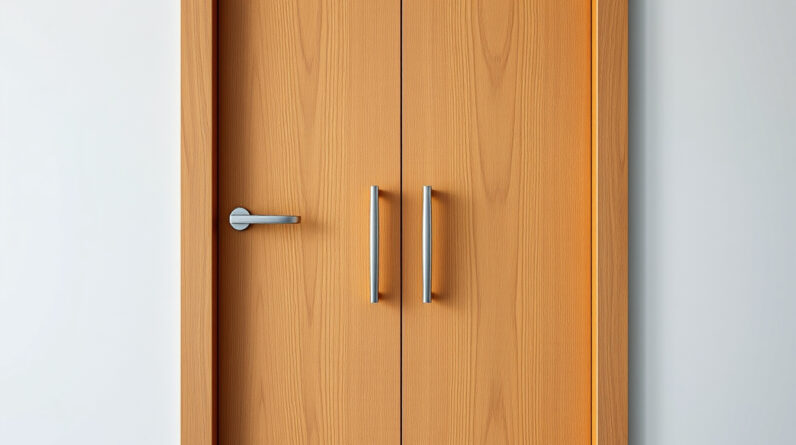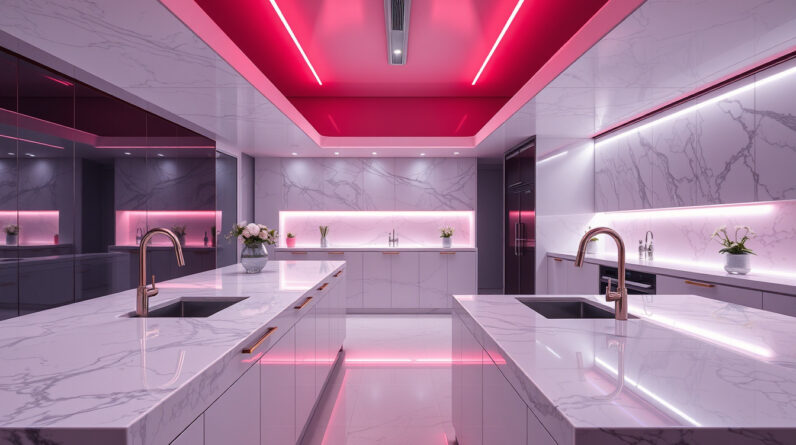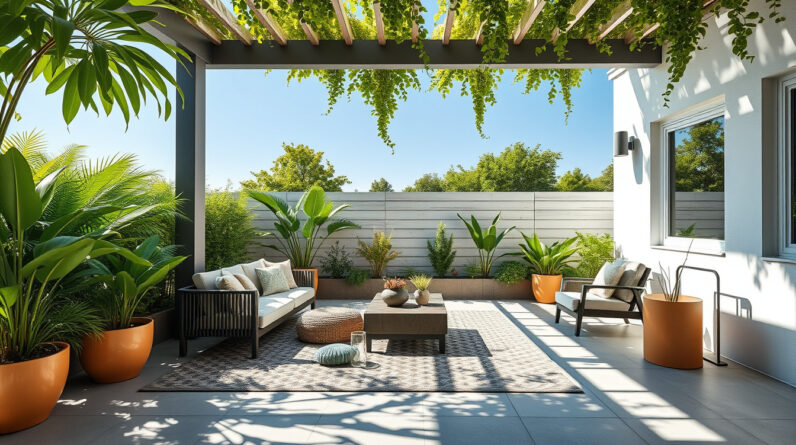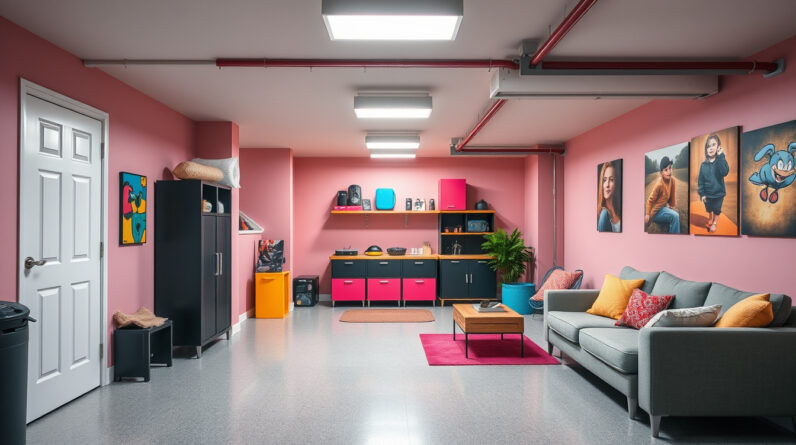In today’s fast-paced world, the desire for more space at home is a common goal for many homeowners. Whether you’re looking to create a dedicated office, add a guest bedroom, or simply enhance your living environment, home extensions offer a practical and stylish solution. Not only do they maximize your property’s potential, but they can also significantly boost your home’s value. If you’re considering expanding your living space, this guide will introduce innovative ideas to inspire your home extension project and help you make the most of your investment.
Why Consider a Home Extension?
A home extension is a fantastic way to increase the usable area of your house without the need to move. It provides flexibility in design and can be tailored to fit your lifestyle needs. Beyond extra space, extensions can:
- Improve functionality
- Boost property value
- Enhance aesthetic appeal
- Create a seamless indoor-outdoor connection
According to research by the Royal Institution of Chartered Surveyors (RICS), well-planned home extensions can significantly increase property worth – sometimes by up to 20%. This investment is particularly appealing for homeowners who want to retain their neighborhood while upgrading their living standards.
Innovative Ideas for Home Extensions
When planning a home extension, it’s essential to think creatively to maximize space and incorporate modern design trends. Here are some innovative ideas to consider:
1. Glass Extensions for Modern Elegance
Glass extensions are a popular choice for homeowners seeking to bring in natural light and create a contemporary feel. Large glass panels, skylights, and bi-fold doors can make your extension feel airy and open while blending indoor and outdoor living.
Advantages:
- Increased daylight
- Stunning views of your garden
- A sleek modern aesthetic
2. Wrap-Around Extensions for Spaciousness
A wrap-around extension extends your ground floor along multiple sides of your house. This creative approach can dramatically boost space and improve flow, offering a large open-plan area that connects with your garden or patio.
Example uses:
- Combined kitchen and living areas
- Large dining space
- Additional informal lounge
3. Two-Storey Extensions for Maximum Impact
Adding a second floor to your extension can significantly expand your home’s footprint without encroaching further into your garden. This idea works especially well if you want to add bedrooms, bathrooms, or a home office upstairs.
Benefits:
- Maximizes vertical space
- Keeps the garden intact
- Enhances privacy between spaces
4. Convert Existing Structures
Sometimes, transforming existing structures such as garages, lofts, or basements can be a cost-effective alternative to traditional extensions. Converting a garage into a livable space or a basement into a home cinema offers creative ways to expand.
Key points:
- Less planning permission (depending on local regulation)
- Quicker turnaround
- Preserves outdoor space
5. Indoor-Outdoor Integration with Patio or Deck Extensions
Imagine extending your home directly into your garden through patio doors or adding a deck area. This approach encourages outdoor living and makes your home feel more spacious.
Tips:
- Use weather-resistant materials
- Incorporate outdoor furniture
- Add heating or lighting for year-round use
Planning Your Home Extension: Tips and Considerations
Before diving into your project, keep these crucial points in mind:
- Check Planning Permissions: Most home extensions require planning approval, especially if your project exceeds certain size limits or is in a protected area. Consult your local authority or an architect early on.
- Set a Realistic Budget: Extensions can vary widely in cost. Establish a clear budget and consider additional expenses like permits, design fees, and furnishings.
- Choose Quality Materials: Durability and aesthetic appeal depend on high-quality materials tailored to your climate and style.
- Consult Professionals: Hiring architects, surveyors, and builders can streamline the process and ensure your extension meets safety standards and building codes.
Cost and Timeline Overview
Understanding the typical costs and timelines associated with home extensions can help in planning:
| Aspect | Details |
|---|---|
| Typical Cost | £1,200 – £2,500 per square meter (source) |
| Typical Timeline | 3 to 6 months, depending on scope and complexity |
Remember that unforeseen delays and extra costs can occur, so always include a contingency in your planning.
Benefits of Investing in a Home Extension
Beyond increasing space, a well-designed extension offers several benefits:
- Enhanced lifestyle quality: More space means greater comfort and functionality.
- Increased property value: Extensions make your home more appealing to future buyers.
- Improved aesthetics: Modern designs can significantly uplift your property’s appearance.
- Future-proofing: An extension prepares your home for changing needs, such as aging in place or accommodating a growing family.
Final Thoughts: Make Your Dream Space a Reality
Home extensions are a smart investment for enhancing your living environment and increasing your property’s value. With innovative ideas like glass extensions, wrap-around layouts, and indoor-outdoor integrations, you can tailor your home to reflect your lifestyle and aesthetic preferences.
To make your project a success, carefully plan, set a realistic budget, and consult experienced professionals. By doing so, you’ll create a beautiful, functional space that you and your family can enjoy for years to come.
Ready to Transform Your Home?
Don’t wait to expand your horizons. Start exploring your home extension options today, and turn your dream living space into reality. Whether you envision a sleek glass conservatory or a multi-story addition, the right planning and expert guidance will set you on the path toward a more spacious, stylish, and valuable home.
Frequently Asked Questions about Home Extensions
Q1: What are the most popular types of home extensions?
A1: Common types include single-story rear extensions, side extensions, wrap-around extensions, two-storey additions, and loft conversions. The best type depends on your space, budget, and desired outcome.
Q2: How long does a typical home extension project take?
A2: Most extensions take between 3 to 6 months, though larger or more complex projects may extend beyond this timeframe. Proper planning can help mitigate delays.
Q3: Are home extensions worth the investment?
A3: Absolutely. Not only do they improve your living space, but they can also increase your property’s market value—sometimes by up to 20%. Plus, they provide the convenience and comfort tailored to your lifestyle.
If you’re ready to expand your living space and increase your property’s value with a creative and functional home extension, now’s the perfect time to consult with architects and builders. Embrace innovative ideas and turn your house into the home of your dreams today!








